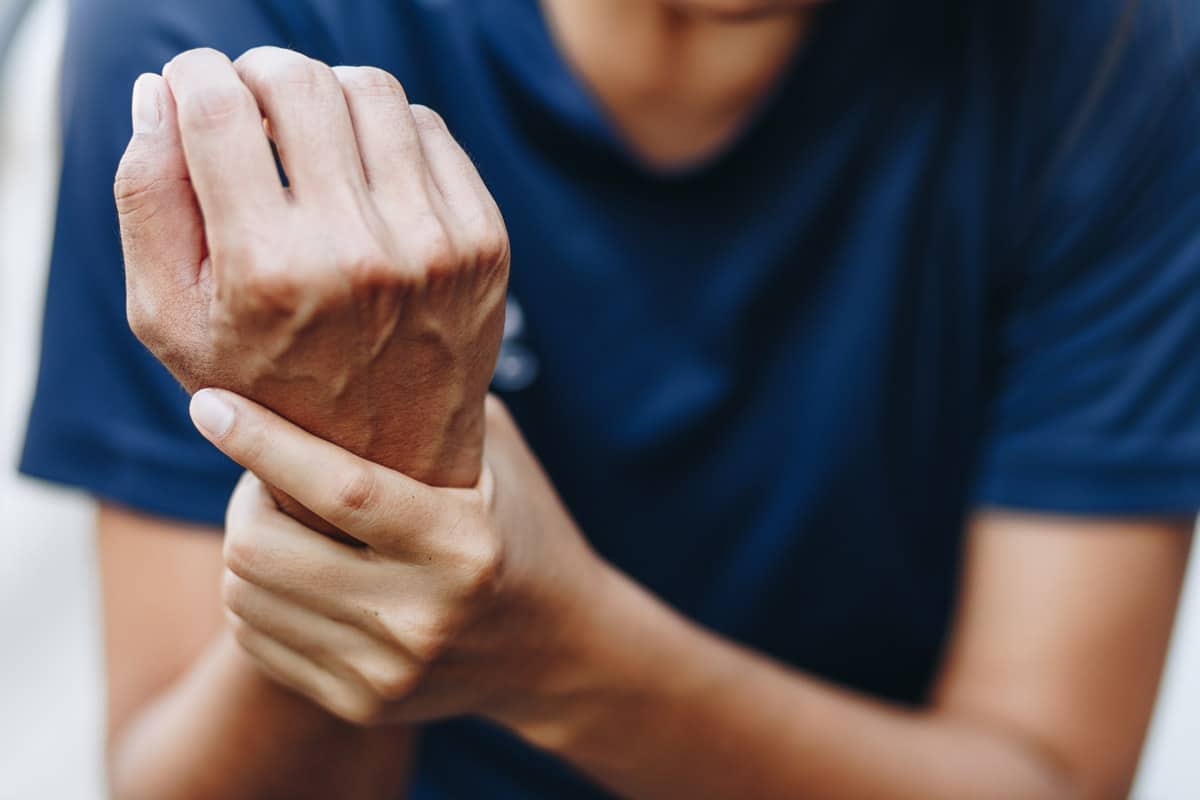Carpal tunnel
Carpal tunnel syndrome is a painful condition that affects the nerves in the hands.
Carpal tunnel
Carpal tunnel syndrome is a painful condition that affects the nerves in the hands.

What is carpal tunnel syndrome?
Carpal tunnel syndrome is named after the carpal tunnel, a narrow passageway in the arm that connects the wrist to the hand. The condition is often caused by swelling in the tendons of the wrist, which puts pressure on and ultimately compresses the median nerve. Whilst regular activities can cause or contribute to carpal tunnel syndrome, it can also be a side effect of fluid retention in the body, cysts, or tumours. It is most common amongst women aged 40 to 60 years, pregnant women, and people with arthritis.
The symptoms of carpal tunnel range from weakness, numbness, and muscle wastage in the hand to darting pains and pins and needles. It’s also relatively common for pain to extend from the hand into the wrist, arm, and sometimes even shoulder. If you notice these symptoms appearing or flaring up at night, we suggest speaking to your doctor. The symptoms might also be more noticeable during a period of overuse, particularly if you work in a job that requires repetitive or awkward hand movements.
Following early diagnosis of carpal tunnel, a range of non-surgical treatment methods may be effective and prevent the need for surgery. Initially, your doctor may instruct you to wear a wrist splint (especially if you are pregnant) or take anti-inflammatory medication, prescription medicines or corticosteroids to relieve inflammation. In some cases, acupuncture or chiropractic care can also be effective in reducing swelling and relieving pressure. If these treatments prove ineffective long-term, the option of either endoscopic or open surgery may be right for you.
The results of your surgery depend on the type of treatment that your doctor deems most suitable for you, although both methods are similarly effective. Open release surgery involves making a small incision in the palm to release the carpal tunnel nerve. Alternatively, in endoscopic surgery your doctor will use a microscopic camera to see the inside of your carpal tunnel and make a precise incision. In both types of surgery, relative to your condition pre-surgery, you can expect a minimal chance of recurrence.
After carpal tunnel surgery, the best thing you can do is take plenty of rest. Your hand will need at least four weeks to recover. In some instances, recovery can take longer and depends on the severity of your condition and overall health. Potential risks of carpal tunnel surgery include infections and nerve damage. Some stiffness and discomfort at the site of the procedure may occur. In these instances, rehabilitative exercises can be very helpful for promoting circulation, restoring mobility and strength.
The rehabilitation process for carpal tunnel surgery ranges from several weeks up to 12 months. Grip strength often returns within two to three months of the surgery and is improved by attending physical therapy and following post-surgery care guidelines. You’ll gradually resume most normal activities from the second week after surgery with any remaining discomfort decreasing with time.
Preparing for your visit
Dr Cheriachan consults from Norwest on Wednesdays and Blacktown on Mondays and Thursdays.
Your first visit will be used to carefully assess your condition as well as gathering all related health information. It is important that you bring all relevant documents including scans and x-rays. We also ask that you wear clothing that allows freedom of movement as your visit will include a physical examination.